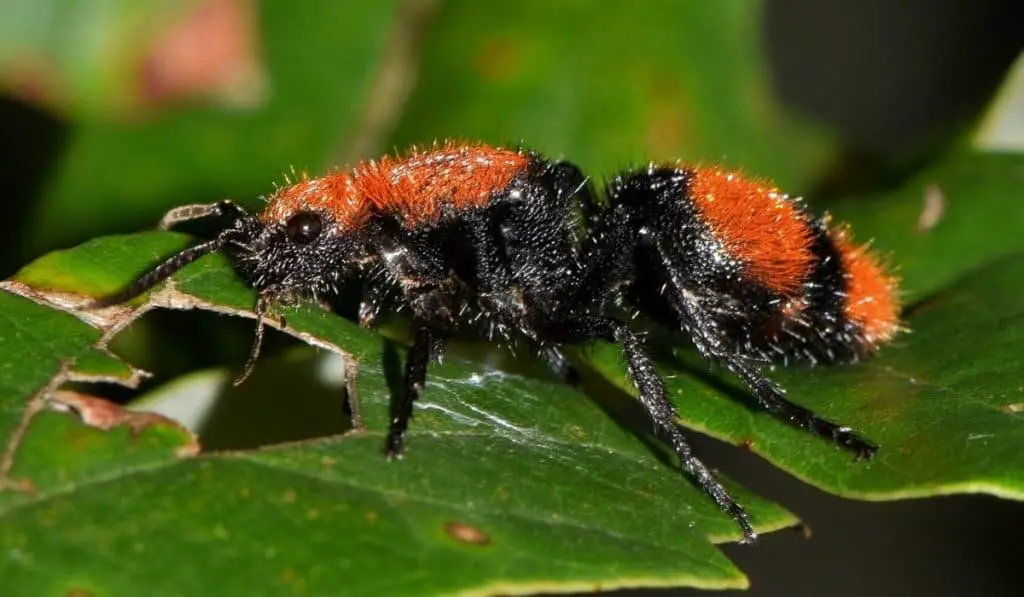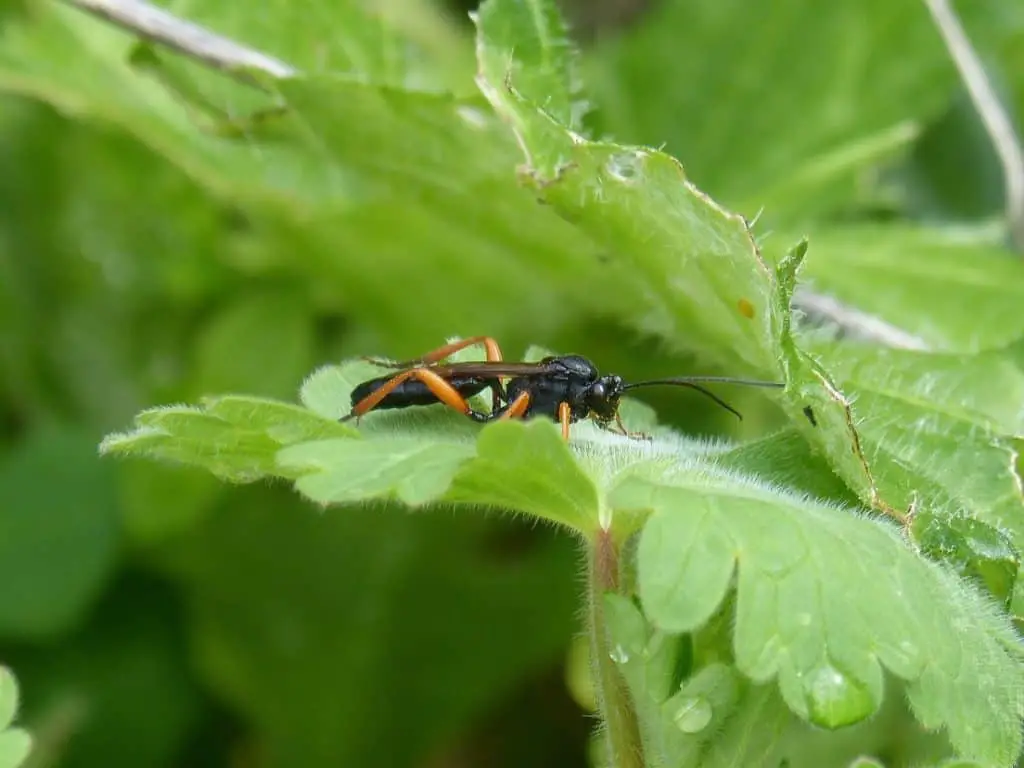Not all wasps make their own nests. Some species such as ruby-tailed wasps, use the nests of bees or even lay their eggs on the larvae of other insects.
Wandering wasps either seek out a host on which to lay an egg or lay their eggs in the nests of bees and other wasps and act as parasitoids (parasites that kill their hosts). These homeless wasps are a link between the nest-constructing wasps and the full parasitoid ichneumon wasps, which lay their eggs inside the host victim. Most wandering wasps are found in warm countries.
The females of most wasps catch their prey and store it in specially constructed cells as provisions for their young or feed it directly to them in nests. However, there are a few groups of wasps that do not do this.
If you want to know more about wandering wasps, please read on.

Parasitic Wasps
The large velvet ant is actually a wasp, not an ant. They are colorful species belonging to the family Mutillidae, which contains over 7,000 species. The velvet ant is a parasitoid of bumble bees and is usually about 12mm (0.5 in) long, the actual size depending on the dimensions of the larva on which it fed on.
This wasp is strikingly marked, having a black head, legs, and antennae, a red thorax (the front of which is black), and a bluish-black abdomen with yellow or white bands.
Large velvet ants are not very common, but the females can sometimes be found running along warm banks where they seek out and enter the nests of bumble bees. Once inside the nest, the female stings the fully grown bee larvae or pupae and then lays an egg on each one within its cocoon.
The velvet ant larva hatches after a few days and consumes the bee larva or pupa in about two weeks. It then spins its own cocoon within that of the bee and completes its transformation. The adult velvet ant emerges in a further two weeks.
Male velvet ants leave the bumble bee nests fairly quickly. They may be seen at flowers or flying low over the ground, following a zig-zag course, looking for females. Although seen more frequently than their mates, the females stay for up to two weeks in the bumble bee nests, taking long drinks of honey before they depart to mate and start the cycle again.
The females normally overwinter in the hosts’ nests, presumably after they have been fertilized, although exact information is not available. Male wasps appear as early as May, with numbers building up in late summer, showing that there are probably at least two generations of large velvet ants born a year.
Although female velvet ants are parasitoids of bumble bees, they have been found to enter honey bee hives in Europe, where they kill the adults by biting their necks to extract honey and body fluids. Because they can kill so many bees in one day, sometimes up to one hundred, velvet ants are commonly known as bee-wolves.
The small velvet ant, a parasitoid of ground-nesting solitary bees and wasps, is similar to the larger species in color and pattern. However, the band at the base of the abdomen resembles a spot, while the other bands are more complete. As with ants, the female is wingless, but the rarer male is winged.
Are wasps social or solitary insects? The answer may surprise you.

Feeding On Beetles
Frequently found on umbellifers such as parsley, carrot, parsnip, and dill, Tiphia femorata is a black wasp with partly red legs. The female’s legs are particularly strong since they are used to tunnel into the ground in search of chafer and dung beetle larvae.
When the larvae are found, the wasp stings and then kneads the victim, using its mandibles. This may increase the paralysis induced by the sting or provide the female with protein-rich food. She then lays an egg and cements it firmly to the lower side of the host larva, which usually recovers after an hour or two and can continue feeding. On hatching, the parasitoid perforates the skin of the chafer grub and gradually consumes it from the outside.
Another wandering wasp that is related toTiphia femorata is Methoca inchenumonoides, whose larvae feed on tiger beetle grubs. Various species of Methoca occur worldwide.
The male is larger but less seen than the female. The female is quite common though often mistaken for an ant. She searches for the tiger beetle’s larva in its burrow and stings it directly under the neck to paralyze. She will sometimes allow herself to be caught before delivering the paralyzing sting.
This can be dangerous, and the tiger larva cant put up a fight before being pacified. The parasitoid then retreats and waits outside for the sting to take full effect before re-entering the burrow, stinging several times more, then kneading the victim with her mandibles, and finally laying an egg.
She fills the burrow with soil, leaving her larva to hatch after two days and feed on the tiger beetle grub.
The young Methoca ichneumoides larva punctures the skin of its host and feeds for about a week, but owing to the size of the tiger beetle larva it may not be completely consumed.
When fully fed, Methoca ichneumonoides and Tiphia femorata larvae spin their cocoons and overwinter with them. In the host’s burrow, both these species pupate in spring and emerge as adults in summer.
Some wasps burrow into the ground to make their nests. Find out more here.

